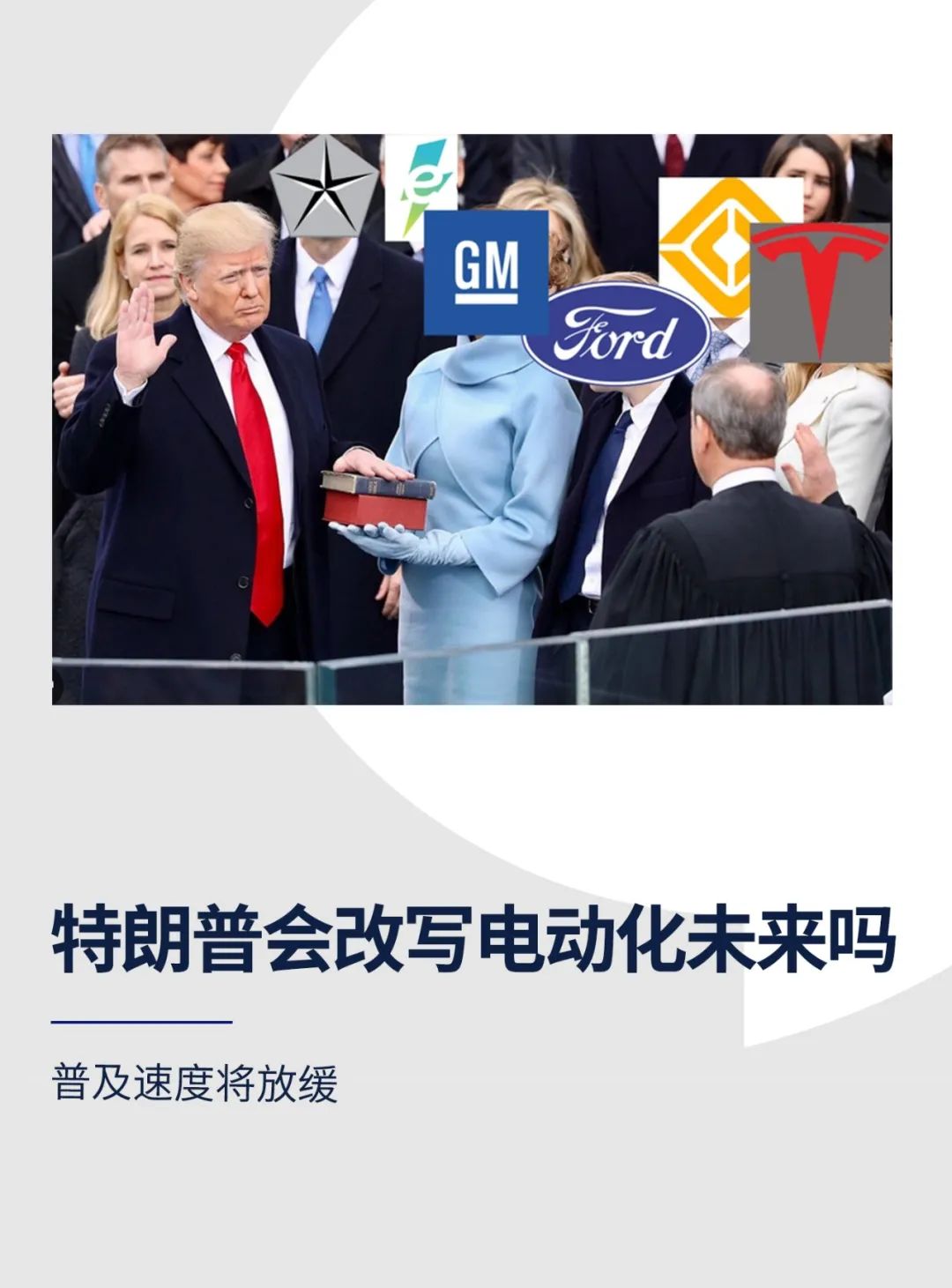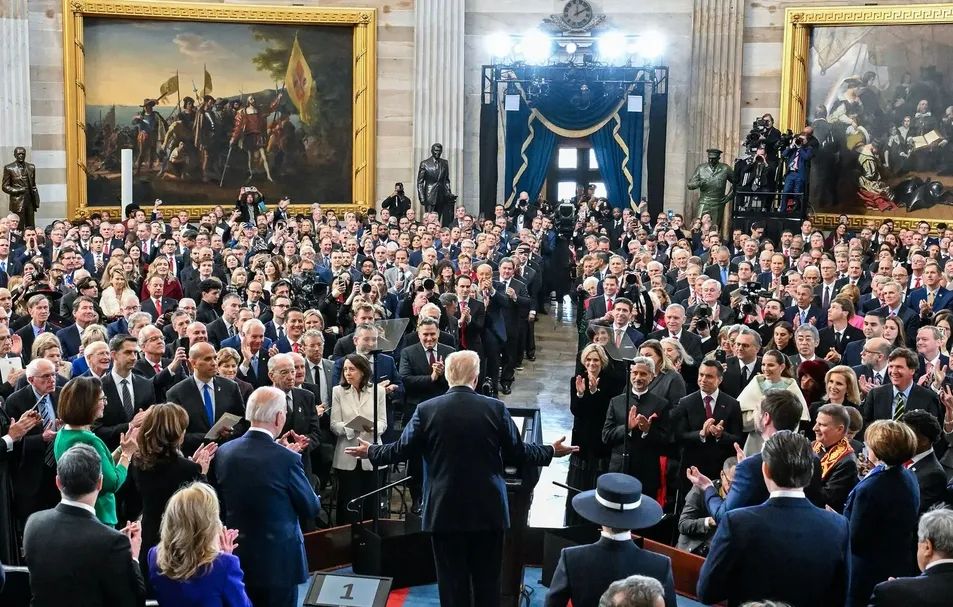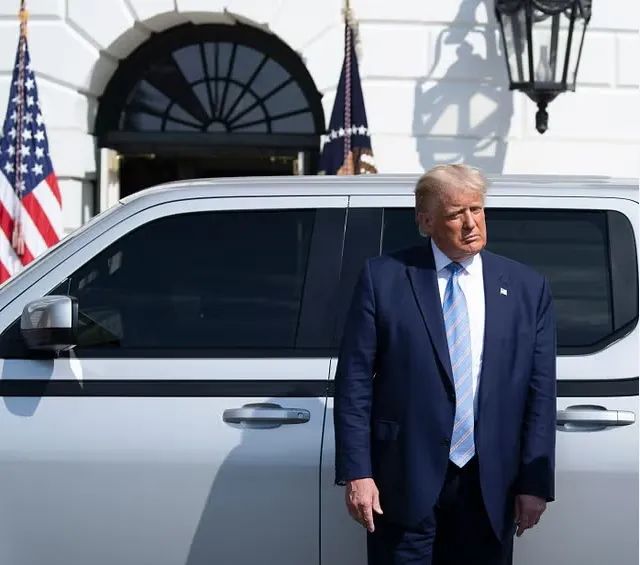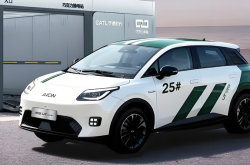Will Trump Reshape the Trajectory of Electrification?
![]() 01/24 2025
01/24 2025
![]() 591
591

Compiled by | Yang Yuke
Edited by | Ge Bangning
Produced by | Bangning Studio (gbngzs)
The unconventional Trump has returned to the political stage.
At noon on January 20, 2025, 78-year-old Donald Trump was sworn in at the Rotunda of the U.S. Capitol, reclaiming his seat in the White House.
Hours later, clutching a black folder, he descended the steps of the Capital One Arena in Washington, where a table adorned with the presidential seal awaited him. He signed a series of executive orders, unveiling his first signature to the crowd before departing.
On that day, Trump issued a total of 26 executive orders.
His first order was to revoke 78 executive orders issued by his predecessor, Joe Biden, including those targeting electric vehicles—a cornerstone of Biden's climate change agenda.
Moments after his inauguration, Trump declared at the Capitol Rotunda, "We will end the Green New Deal, rescind the electric vehicle mandate, save our auto industry, and fulfill my sacred promise to the great American auto workers."
Among the 78 orders revoked was one signed by Biden in August 2021, setting a non-binding target for 50% of new U.S. vehicle sales to be electrified by 2030.
Trump announced plans to halt the allocation of unused government funds from a $5 billion electric vehicle charging station fund. In 2021, Biden had allocated $7.5 billion to establish a nationwide network of charging stations, aiming for 500,000 by 2030.
Trump intends to direct the U.S. Environmental Protection Agency (EPA) to reconsider stricter emission regulations. To comply, automakers must gradually sell 30% to 56% electric vehicles by 2032, in line with federal emission regulations and those issued by the U.S. Department of Transportation.
Trump also aims to eliminate an exemption granted to California by the EPA in December 2021, allowing the state to ban the sale of pure gasoline vehicles by 2035—a regulation adopted by 11 other states.
Further, the Trump administration may ease vehicle emission standards. He ordered an immediate review of domestic energy resource development, which has restricted "consumer vehicle choice."
Reports suggest the new administration aims to reduce fuel economy and emission standards to 2019 levels, increasing emissions per mile per vehicle by nearly 25% compared to 2025 limits.
It is widely anticipated that Trump will abolish the $7,500 federal electric vehicle tax credit as part of his campaign against the electric vehicle "mandate."
Trump stated he is considering eliminating unfair subsidies and other unreasonable market distortions imposed by the government. These distortions favor electric vehicles over other technologies, effectively compelling individuals, private enterprises, and government agencies to purchase electric vehicles, rendering other vehicle types unaffordable.

A Shift in Attitude, Not Policy
Industry analysts believe Trump's actions are largely symbolic, marking a shift in the U.S. government's attitude towards electric vehicles rather than a policy reversal. Implementing these policies with a simple signature may not be feasible.
It remains unclear whether the details in the executive orders can be achieved solely through Trump's signature. He may need Congress to act to revoke some of the measures he seeks to cancel.
His actions could trigger prolonged court battles, with some regulations taking years to resolve—perhaps longer than Trump's presidency.
Abolishing the electric vehicle "mandate" would only rescind Biden's requirement for the EPA and Department of Transportation to develop new regulations encouraging wider electric vehicle adoption, not the regulations themselves. The Trump administration would still need to modify these regulations, and their implementation's difficulty is uncertain.
Notably, funds encouraging the sale and manufacture of electric vehicles have been legislated, and the president cannot unilaterally abolish them. The Inflation Reduction Act and the Infrastructure Investment and Jobs Act are regulations passed by Congress under Treasury Department guidance. Changes or new regulations must undergo the standard legislative process, and orders to suspend payments related to these funds may face legal challenges.
"I believe people will scrutinize the true meaning of (Biden-era funds) for jobs and economic activity and what it signifies for the United States to become a stronger manufacturing nation than ever," said David Klanecky, CEO of battery recycling company Cirba Solutions.
Albert Gore, executive director of the Zero-Emission Transportation Association, stated in a press release that electric vehicles and battery supply chains have created over 240,000 jobs in the U.S. and attracted over $182 billion in private investment.
A critical factor is that the U.S. has already achieved initial success in the electric vehicle transition.
In 2024, approximately one out of every 12 new vehicles sold in the U.S. was a pure electric vehicle. Tesla spearheads the modern electric revolution. Additionally, at least two promising electric vehicle companies operate in the U.S.—General Motors sold over 100,000 electric vehicles for the first time, while Ford Motor Company was honored as the best-selling model other than Tesla.
About a dozen states are building or retrofitting auto plants to produce these vehicles. The U.S. is experiencing a "battery boom," where power units are manufactured. Hybrid vehicles also require these batteries.
Undoubtedly, China leads this race. Fifty percent of cars sold in China are electric or plug-in hybrid, and Chinese automakers like BYD are increasingly selling worldwide, stealing customers from established automakers, including American ones.
However, other regions, excluding the U.S., face challenges.
The European electric vehicle revolution has encountered severe bottlenecks. Japan has just embarked on this path. While South Korea's electric vehicle production is impressive, it is severely limited by market size and heavily relies on expansion and exports.
American demand for electric vehicles is not only growing but faster than demand for gasoline-powered vehicles. Currently, dozens of electric vehicle models are under development, with years to completion—far longer than a presidential term. Traditional automakers have invested $33 billion in factories producing only electric vehicles and another $90 billion in battery factories in the U.S.
In the U.S., if electric vehicle demand declines, as it has in countries where Germany has cut incentives, automakers may be left with costly, underutilized electric vehicle and battery factories. Federal funds for electric vehicle and battery manufacturing will be harder to obtain, undoubtedly increasing the risk of financial distress for ongoing manufacturing projects.
Trump claims these measures will revitalize the U.S. auto industry. However, as Asian and European automakers continue refining electric vehicle technology, reducing electric vehicle projects in the U.S. may cause American automakers to fall behind.
"Other countries are still rapidly developing electric vehicles, and if the U.S. does not prioritize them, we will eventually lose our competitiveness," said Stephanie Brinley, vice director of Mobility Intelligence at S&P Global.
The Automotive Innovation Alliance advocates for continuing tax credits and other support, arguing that American automakers seeking to manufacture and sell electric vehicles need assistance to compete with Chinese automakers.
Things always change. As U.S. House Speaker Mike Johnson stated in an interview last fall, "It's impossible and unwise to 'blow up' the Inflation Reduction Act. You have to use a scalpel, not a sledgehammer."

Slowing Down, Not Reversing
Analysts suggest that Trump's executive orders are unlikely to slow down electric vehicle adoption but may keep gasoline and diesel-powered vehicles on U.S. roads longer.
Brinley stated in a phone interview that consumers, not regulations, drive the pace of electric vehicle adoption.
S&P Global predicts that electric vehicle sales in the U.S. will continue to grow, albeit at a slower pace. Its latest forecast is that by 2030, electric vehicles will account for about 25% of U.S. light vehicle sales, down from the 30% predicted in December 2021.
Brinley wrote in a blog post that tax credits have spurred billions of dollars in private investment in battery manufacturing, reducing electric vehicle batteries' dependence on imported raw materials, which may continue under the Trump administration.
This implies automakers will proceed with plans to reorganize local electric vehicle production. Previously, automakers like Honda and BMW have expressed this strategy post-Trump's election.
"If we want to see more electric vehicle adoption, we will continue to see more production in the U.S.," said Brinley.
Another fact is that if you're an auto company operating a capital-intensive business strictly regulated, you must prepare for a protracted battle.
Trump is pushing for a 180-degree turn in Biden's policies, which the automotive industry cannot and cannot afford to reverse every 4 to 8 years.
Even if all this is legally and practically feasible, automakers may still strive to develop electric vehicles. Regardless of Trump's changes, American automakers are committed to electric vehicles and will not completely withdraw.
Traditional automakers also do not want to abandon electric vehicles, even if they are currently unprofitable. As electric vehicle sales grow, they are expected to turn profitable, as Tesla did when expanding electric vehicle production. Furthermore, due to fewer moving parts, manufacturing electric vehicles is more profitable than gasoline-powered vehicles with complex engines and transmissions.
Tesla exemplifies this. In the first three quarters of 2024, Tesla's profit margin was approximately 16%—almost twice that of General Motors.
Jeff Schuster, Global Head of Autos at industry consulting firm GlobalData, said, "(With changes in regulatory requirements), we may see a significant slowdown in electric vehicle adoption, but considering all these investments, a reversal is unlikely."
(Some content of this article is compiled from Automotive News, Reuters, New York Times, Politico, Bloomberg, Carscoops, CNN, Automotive Dive, BBC reports, and some images are from the internet)





